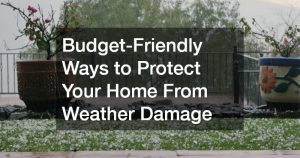In public buildings and spaces, professional designers make thoughtful choices in every aspect, down to the smallest detail. A specific flooring will be used depending on the expected type and volume of foot traffic in an area. Restroom partitions can be antibacterial for healthcare or hospitality locations or black and heavy-duty in public places to discourage vandalism and abuse.
This prevalence of design is all around us, and it tends to be invisible. We notice it when it’s absent. When something goes wrong, or when we encounter an inconvenience, we start thinking like designers. We wonder why a set of stairs couldn’t have been made more accessible or why a chair couldn’t be more ergonomic.
The absence of good design tends to become especially pronounced in our personal spaces. Not everyone can employ an interior designer. And even the professionals don’t always factor in your individual needs, which may change over time. The best way to solve this is to embrace your innate potential to solve problems by thinking like a designer.
The use of design thinking
To the layman, art and design may be interchangeable terms. The idea of redesigning your home can be reduced to a simple matter of making things look better, changing the aesthetic, or similar cosmetic improvements.
However, unlike art, design must place significant emphasis on function and utility. To arrive at desirable solutions, we need to use a process known as design thinking.
In the professional domain, this process is formalized. Designers put themselves in the user’s shoes, understanding problems to better define them. They then proceed to ideate and test different solutions.
Some of these aspects of design thinking are non-transferable in the casual context. When you’re just a homeowner with no formal design training, and you want to improve your place of living, you probably can’t afford to go through several iterations.
Yet design thinking can also lend itself to your efforts in unexpected ways. For instance, end-users don’t normally empathize with their own needs. But consider how your lifestyle might be changing. Kids grow, while parents become elderly over the years.
Homes are built for generations of use. Empathizing how you and other people might need the home for different functions can help inform your decisions.
Where things could go wrong
Design thinking also helps to reframe your approach towards home improvement. By controlling the importance you assign to aesthetics, you give more thought towards function. This lets you avoid the potentially costly mistake of not considering basic elements such as lighting or orientation.
Think about where things could go wrong in ways that are difficult to remedy by simple fixes. For instance, not taking into account the north-south orientation of the home might seem of little importance. Yet this is a fundamental element that has influenced how we build homes for centuries.
If a home isn’t built with solar factors in consideration, it can receive less warmth and natural light each day. In the northern hemisphere, having living areas oriented towards the south will maximize illumination and heat throughout the day.
This makes your home a more comfortable place to live in and helps cut down on energy bills. Over time, it has a huge impact on livability, but mistakes in this regard are difficult to correct.

Preserving flexibility while improving durability
Approaching home improvement with a designer’s consciousness also helps you grasp the value of working with smaller spaces. From the standpoint of flexibility, less is more. A smaller house, especially one with a degree of modularity, allows you to make cost-effective adjustments.
Small homes are also more efficient. You spend less on energy to regulate the indoor temperature and humidity. Fewer maintenance costs are incurred over the years or as a result of any major home renovations.
Minimizing our homes’ continued upkeep costs is especially significant in light of our need to live sustainably. Confronted by the growing issues surrounding climate change and extreme weather, homes must be built to last. It’s easier to build and maintain something small and durable within a fixed budget.
You don’t need formal training as a designer to apply design thinking and improve your living space. Using these guiding principles, you can make changes that are not solely focused on immediate needs or trendy appearances but are also thoughtful, well-considered, and sustainable. Ultimately, you’ll be able to improve your home and build something that lasts for decades while continuing to fulfill the changing needs of the people within.











